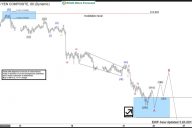U.S. stocks have delivered incredible stock market returns for a long time: the average compounded total return on the U.S. stock market has been nearly 10 percent per year from 1927 through 2016 (Using data from Ken French’s website on the market-capitalization weighted CRSP index).
Doesn’t sound impressive?
Consider the fact that a $100 invested for 90 years at 10 percent would compound to over $530,000. Perhaps this is why my two favorite investors of all time suggest that savers stash the bulk of their cash in the US stock market:
First, Warren Buffet’s advice:
Put 10% of the cash in short-term government bonds and 90% in a very low-cost S&P 500 index fund. (I suggest Vanguard’s.)
Next, Jack Bogle’s advice:
I wouldn’t invest outside the U.S. If someone wants to invest 20 percent or less of their portfolio outside the U.S., that’s fine. I wouldn’t do it, but if you want to, that’s fine.
When great minds speak, we should listen, but we should also ask a critical question: Are Warren and Jack making this recommendation based on evidence? Or are they basing this recommendation on their experience as long-time US equity market investors?
In this short essay, I explore the idea that Buffett and Bogle’s advice should be digested with a healthy dose of skepticism. To make this point, I highlight several recent research articles that suggest US stock returns are exceptional relative to all other stock markets across time. The US stock market is an anomaly and perhaps the ubiquitous disclaimer, “Past performance may not indicate future performance,” is an important consideration with respect to the expected performance of the US stock market over the next century.
What is the Equity Premium Puzzle?
The exceptional performance of the US stock market has been deemed the, “The equity premium puzzle,” by academic researchers and was first discussed in an influential academic paper by Rajnish Mehra and Edward Prescott in 1985.











No Comments